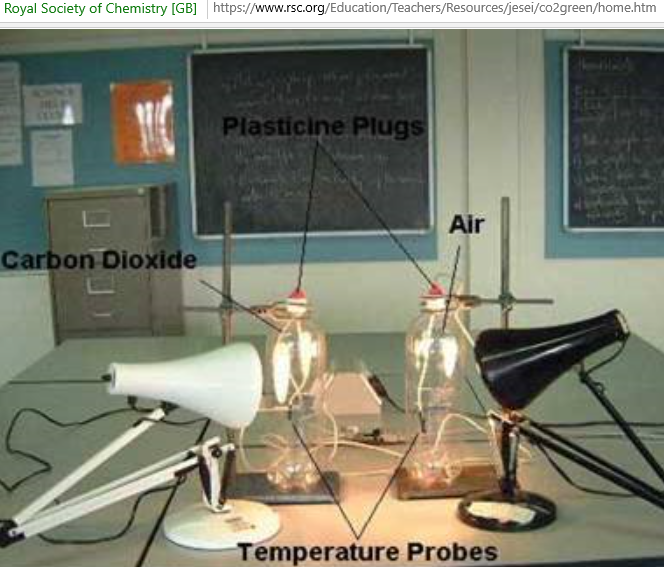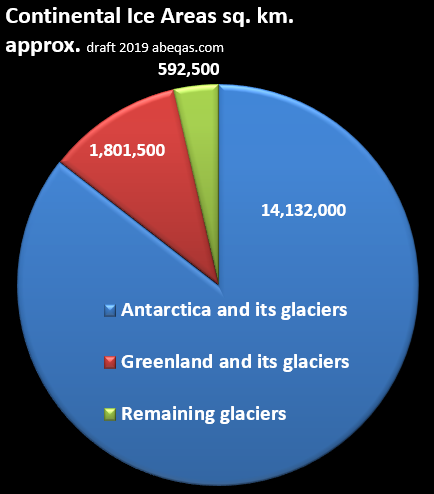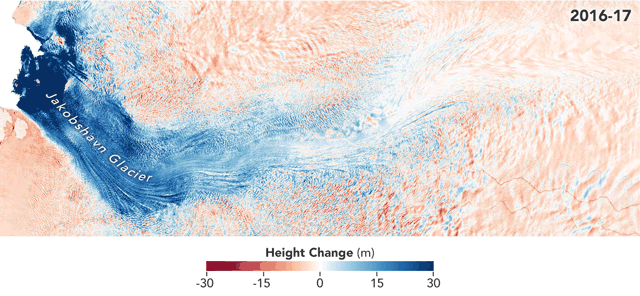
Do NSF-funded SERC experiments invalidate the greenhouse gas effect?
I’ve sent a note to the National Science Foundation (NSF) – funded, STEM – geared, Science Education Resource Center (SERC) to share my concern about their popular CO2 Greenhouse Gas Demonstration Laboratory Experiment (SCGGDLE)*
Any are free to examine their standard experiment and confirm if the authors and sponsors have invalidated the greenhouse gas (ghg) notion at:
https://serc.carleton.edu/teachearth/activities/50193.html
The accolade-winning experiment is introduced with anthropogenic climate change assertions. I have not researched in depth but possibly experiments such as this may have been widely used in classrooms around the continent for decades. These heating and cooling experiments applied to bottles of air and CO2 have simply demonstrated the well known thermodynamic, highly reliable, and useful principle of heat capacity for a gas or mixture of gases, of any given volume, mass, and temperature.
Given that this experiment is favored by mainstream educators for classroom demonstrations, it appears that there is no laboratory experiment one can find to demonstrate the greenhouse gas notion. The SERC experiment does help somewhat to also realize that the accepted notion of a greenhouse gas in popular jargon is:
A GAS THAT ABSORBS HEAT/RADIATION AND RELEASES THAT HEAT/RADIATION AT A LATER TIME.
That definition happens to already be covered by the universally accepted Ideal Gas Law and its variants. I have posted on this topic in the the past regarding my student rooted and developing interpretations of the principles of IR – active gas molecules such as CO2 and H2O. In any case it seems clear that many scientists and laypersons accept and promote the definition above for a greenhouse gas. And if that is the commonly accepted definition, then it invites challenge in many regards.
Because old-school thermodynamics and heat capacities qualify for all gases, I took another look into the specific heat capacity of CO2 versus the same for dry air. Those are the two gases compared in the SERC experiment. In SI units, the specific heat capacity is the amount of energy (Joules) required to raise the temperature of 1 kg of matter (gas) by 1 degree Celsius. It turns out that the specific heat capacity of CO2 is lower than that for average air. Depending upon the relative masses of the two samples, the heat capacities explain why the temperature of the CO2 filled bottle rises more quickly than the temperature of the dry air in the other bottle.
In contrast to the ghg notion, one of the most significant, verified, widely measured and relevant heat engines driving our planet’s climate rhythms appears to be the solar forced atmospheric retention, circulation, and release of latent heat. These particular features are exclusively coupled to water in all of its states and positions.
And the heat capacities of water in its various states are known to be much higher than those of normal air and of CO2. Accordingly it takes more heat to raise the temperature of a water vapor sample than to raise the temperature of most other natural gas mixtures. This means, again, that if one is looking for a gas with greater heat storage and release properties, one should look for the gas that only slowly changes temperature upon heating, not the one that changes temperature quickly.
The impressive heat capacity of water vapor has nothing to do with the supposed greenhouse gas effect. The presumed ghg effects of wiggling and spinning molecules appear to be almost lost in the noise** by the relatively high momentum translational kinetic features of the same molecules, as described by the Kinetic Theory of Gases. It’s also notable that the featured experiment, along with its close cousin featured by the Royal Society of Chemistry at https://www.rsc.org/Education/Teachers/Resources/jesei/co2green/home.htm (this resource is also the source of the featured image) both mention water vapor but do not compare any results against moist air. For that matter, the relative amount of moisture in the air sample is not discussed in either lab example. That alone is a challenge to the experiments, because the results would be very sensitive to this quantity.
To learn from any erroneous experiment, one typically questions the setups and more. My colleague Dr. David Tofsted at the Las Cruces Atmospheric Forum has already noted to our group that the SERC experiment uses a concentration of CO2 apparently of 100%, when in fact the concentration of CO2 in our atmosphere is considered to be well under 1%.
In a few paragraphs here I have explored two experiments which claim to demonstrate the greenhouse gas condition, but which actually explore basic thermodynamics associated with the heat capacity of a gas mixture. The experiment guides appear to make no mention of the conventional heat capacity which is actually being measured. In addition, the experiment guides do not explain the reason for the extreme concentrations of CO2 (100%) used in the studies. Nor do they account or give guidance for any concentration applied for H2O vapor.
No doubt there is much I still have to learn. Yet the specific heat capacities described here cannot take a vacation from any further argument.
This is a draft and an opinion piece that was not funded by any external party.
* my acronym for SERC’s CO2 Greenhouse Gas Demonstration Laboratory Experiment
** those wiggles and spins would be lost in the kinetic noise if not for the essential advancements of IR spectroscopy.
 4631total visits,2visits today
4631total visits,2visits today

